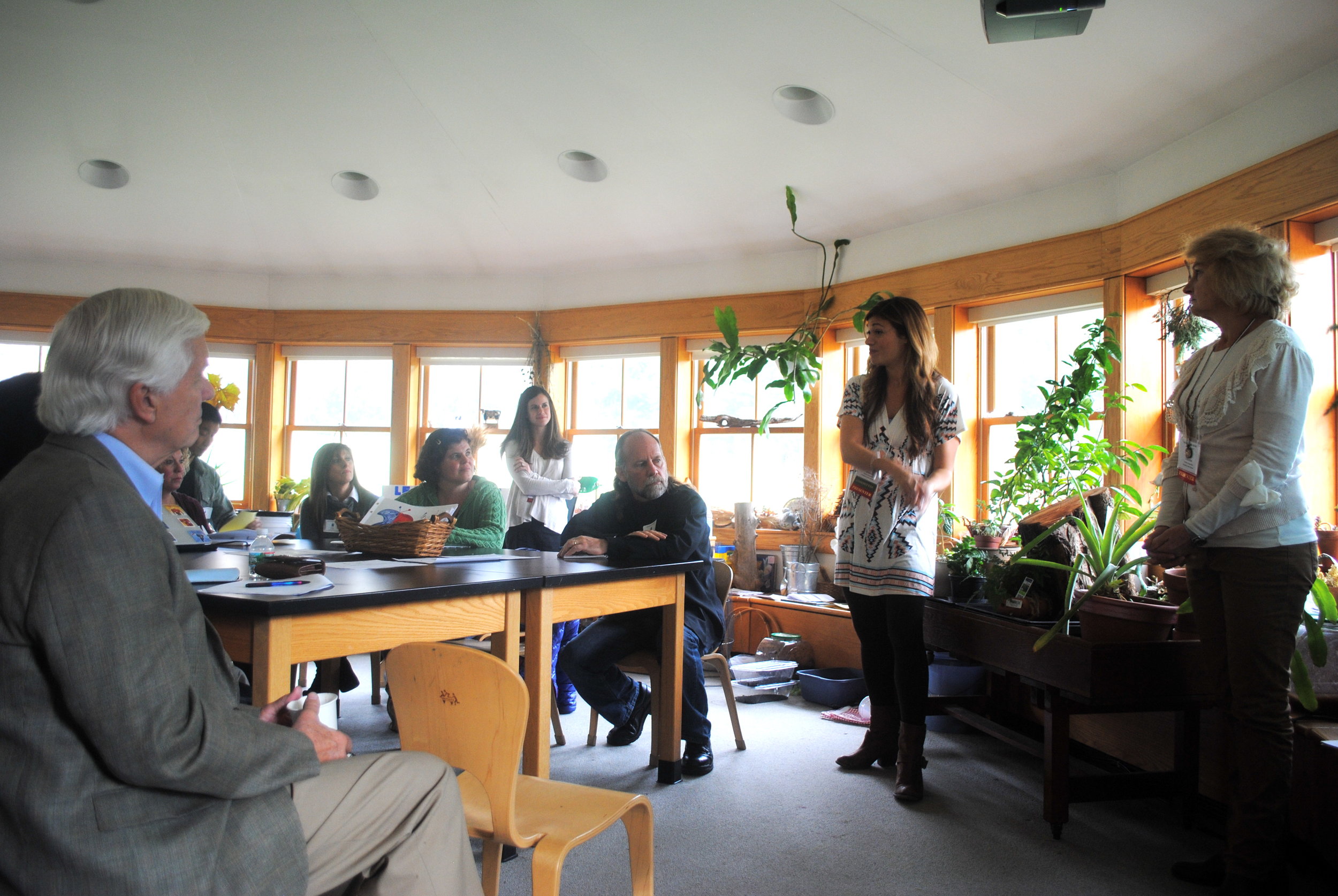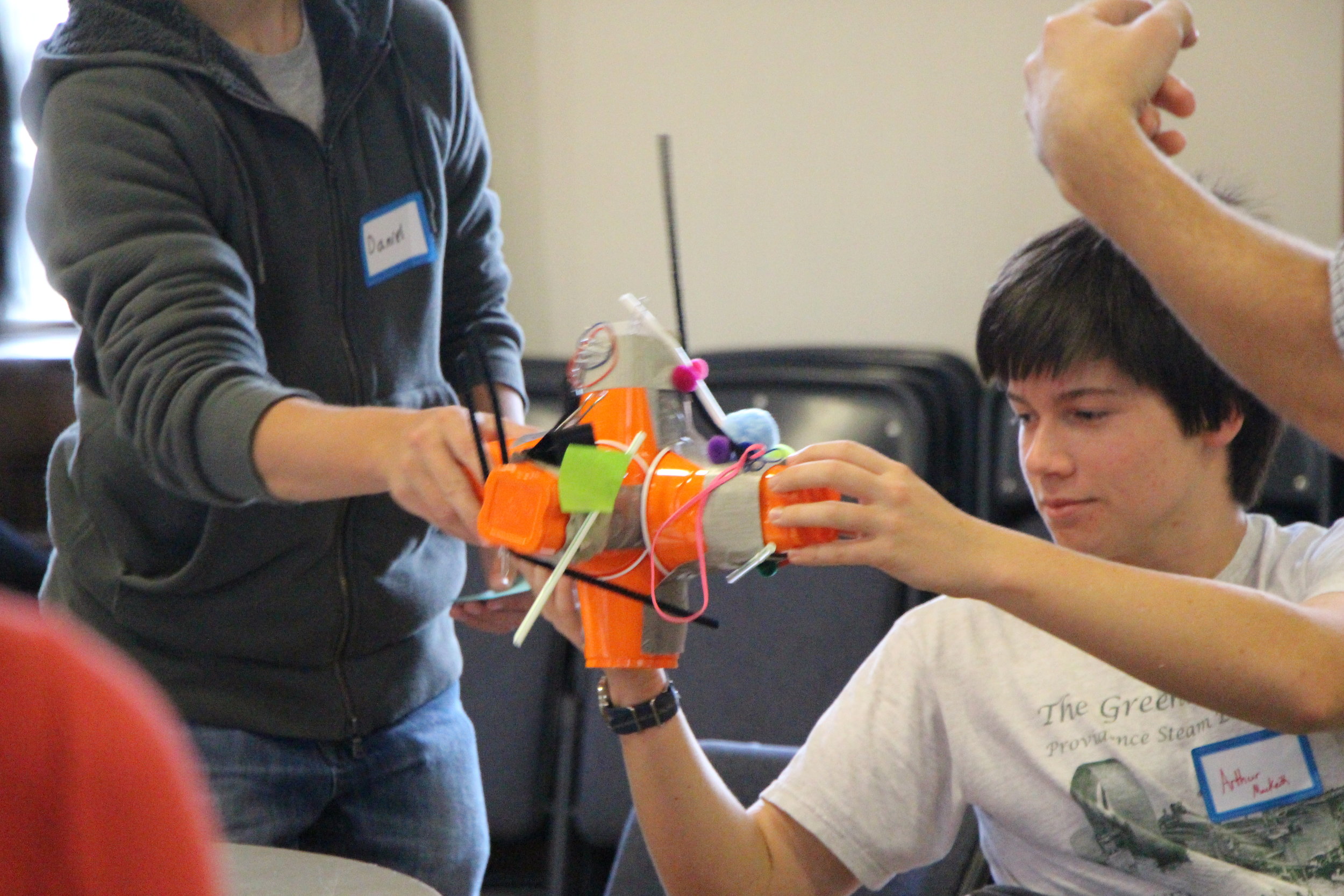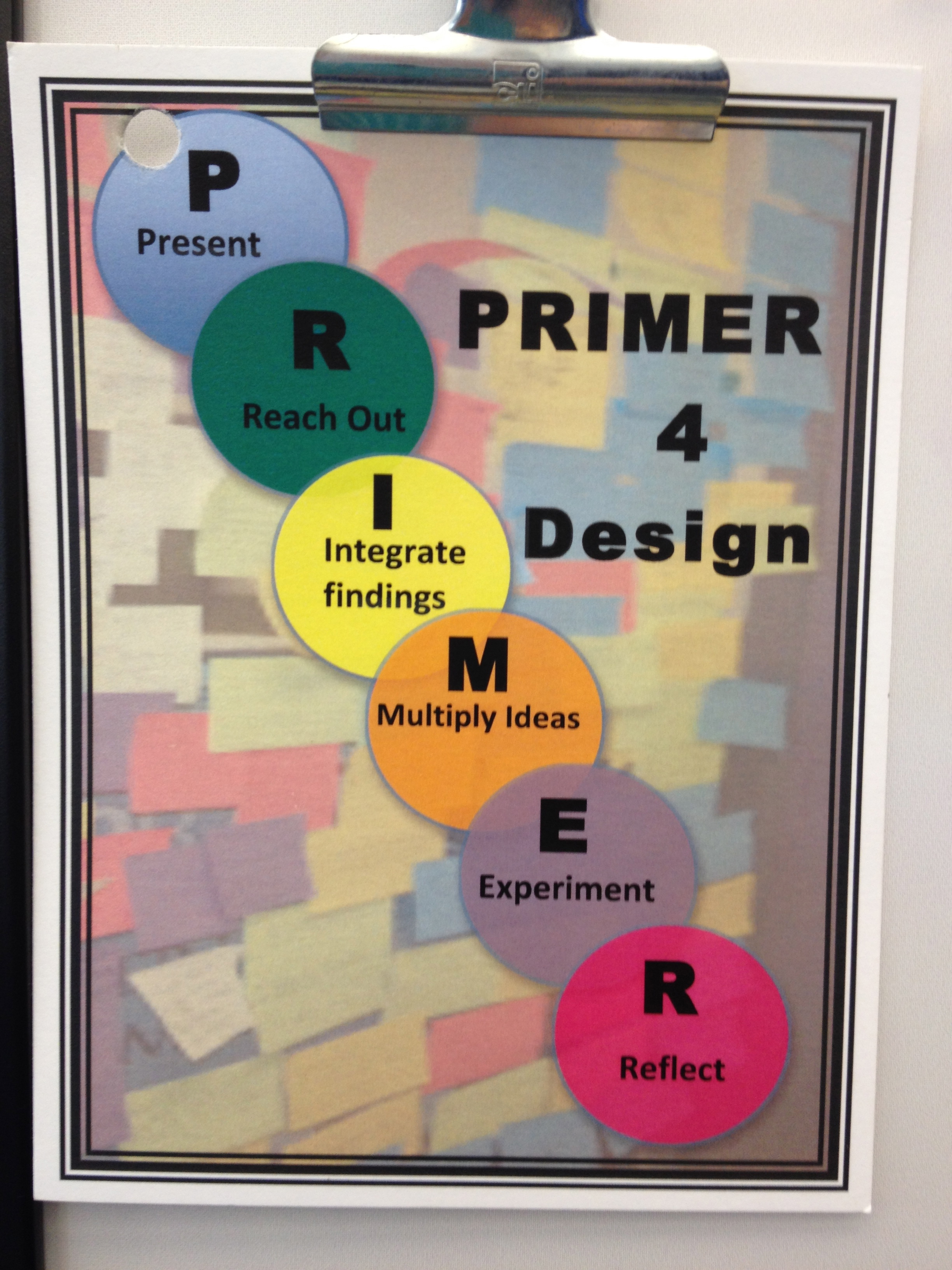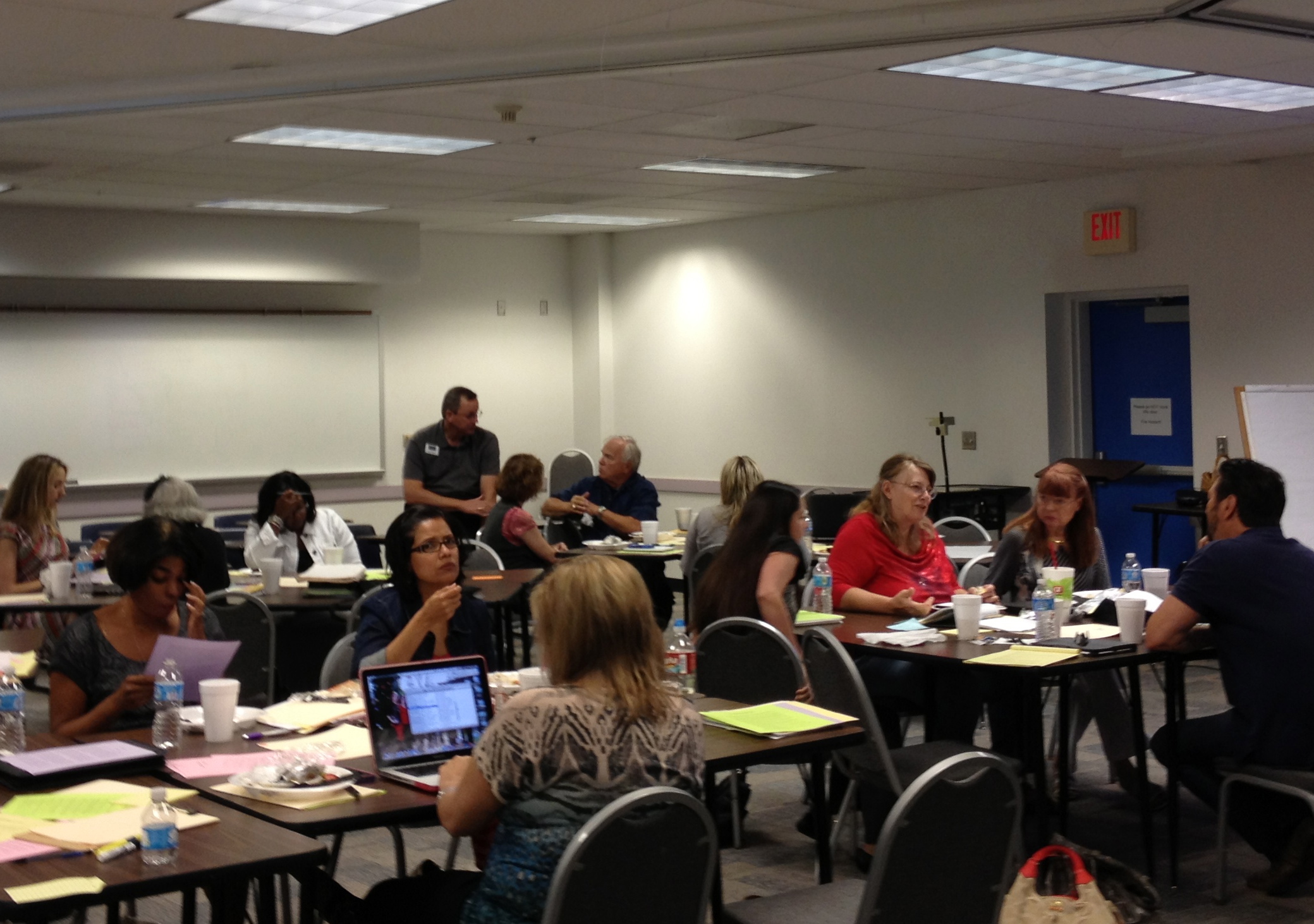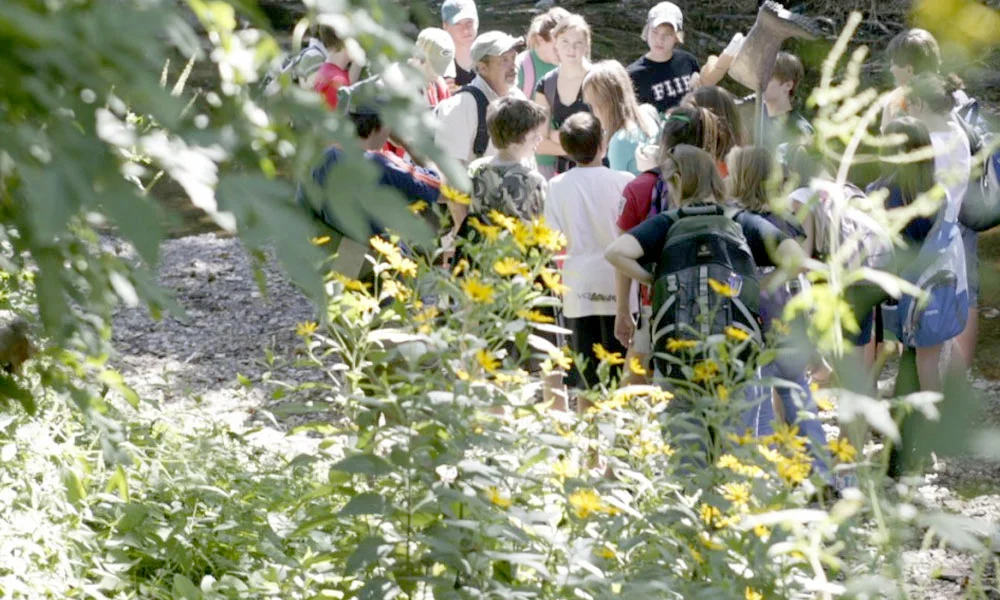
BLOG ARCHIVES
All Aboard the Reggio Train by Guest Blogger, Bobbi Macdonald of City Neighbors Foundation
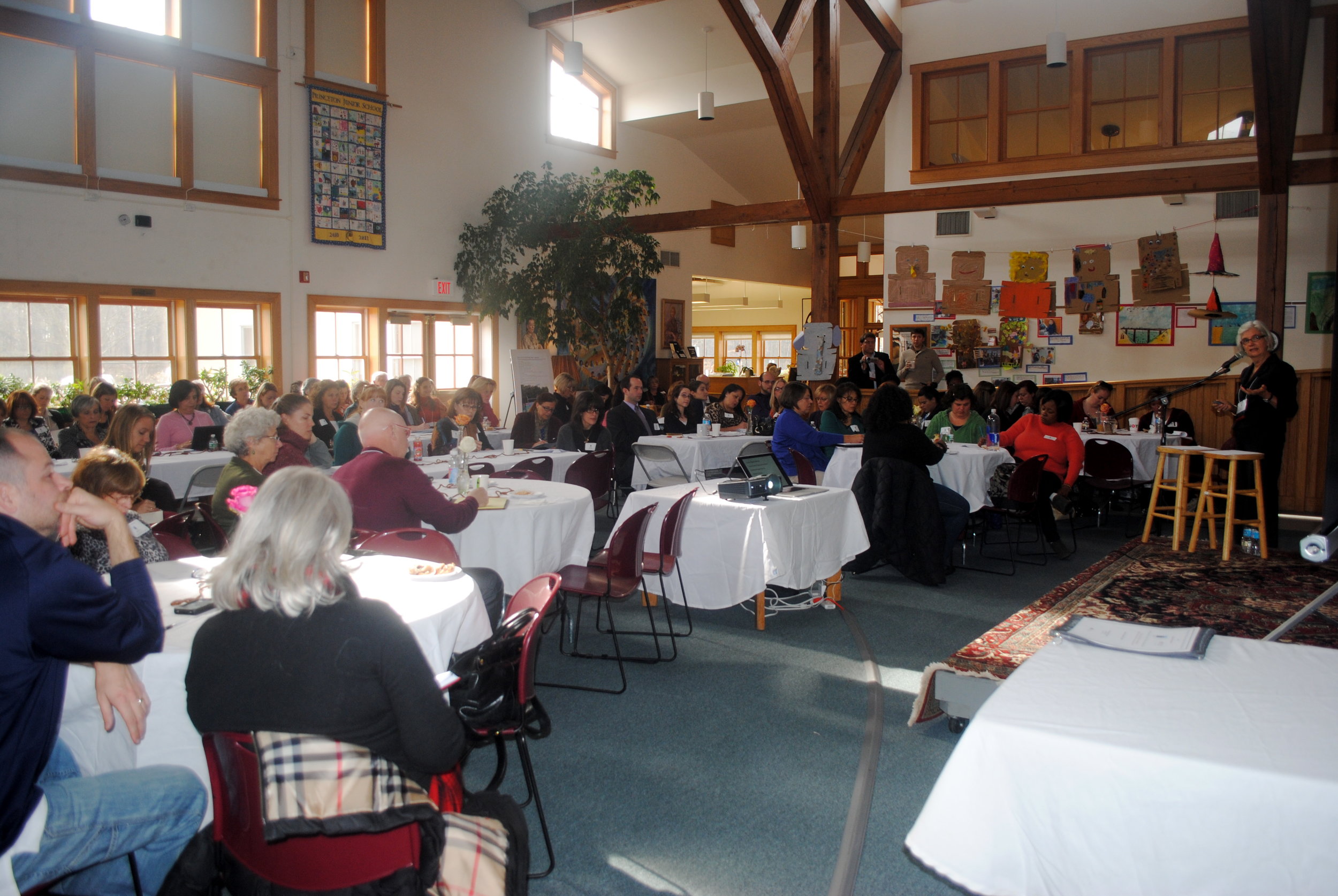 I had a chance to gather with folks at the Princeton Junior School in NJ for a great conference on November 15th. I took the train with Bob Dietzen, the City Neighbors Hamilton (CNH) Awesome 5th grade teacher, and was met at the train station by the CNH Fabulous 3rd grade teacher, Marilyn Mullen, along with Jessica DiLorenzo, past teacher of City Neighbors, and grand connector who brought us all to New Jersey for a conference about working with the principles and practices of the Reggio Emilia approach in American Schools.
Reggio Emilia is a small city in Italy with an amazing system of preschools that were founded by the villagers after World War II. They sold the tank left among the ruins of their town and decided to make a school that would teach children to be true to their humanity, a school that would prevent the next generation from ever choosing war.
I had a chance to gather with folks at the Princeton Junior School in NJ for a great conference on November 15th. I took the train with Bob Dietzen, the City Neighbors Hamilton (CNH) Awesome 5th grade teacher, and was met at the train station by the CNH Fabulous 3rd grade teacher, Marilyn Mullen, along with Jessica DiLorenzo, past teacher of City Neighbors, and grand connector who brought us all to New Jersey for a conference about working with the principles and practices of the Reggio Emilia approach in American Schools.
Reggio Emilia is a small city in Italy with an amazing system of preschools that were founded by the villagers after World War II. They sold the tank left among the ruins of their town and decided to make a school that would teach children to be true to their humanity, a school that would prevent the next generation from ever choosing war.
Louise Cadwell of the Cadwell Collaborative spoke to us about Reggio Emilia. She identified 6 essential components of the work in Reggio Emilia that can be inspirational for our work:
1. Relevant work and projects with students. (If you are in the city – study the city!)
2. Redefining the teachers role. (Facilitator and reseracher and provocateur.)
3. The practice of dialogue. (“Dialogue is a conversation with a center, not sides.”)
4. The multiple languages of learning. (How many ways can children express their knowledge?)
5. The effects of the environment on learning. (The classroom and school environment that allow us to do our best work.)
6. The learning community. (Teachers looking closely and reflecting on the complex work of teaching.)
We had a lot to learn together! Ashley Cadwell gave a great workshop on school environment and setting up the classroom. He shared lots of great ideas, one especially that I am bringing home on this train. “School can be like a home. Home speaks of relationships that are comfortable, organic and evolving.”
Juliana McIntyre Fenn, author of Wisdom at Play and founder of the thirty-year-old Princeton Junior School was there. She told us she is 78 years old. She told us to remember JOY in our work.
A great day! The train is pulling into Baltimore. Welcome Home.
Postscript:
Bobbi Macdonald is dynamic leader in progressive education and founder of City Neighbors Foundation in Baltimore. City Neighbors has founded three schools! City Neighbors High School , City Neighbors Charter School, and City Neighbors Hamilton. Click here to see Bobbi's TedX talk, and click here to hear her speak on the importance of the school environment. Bobbi, Ashley and Louise were invited to participate in a New Jersey Association of Independent Schools Symposium, Provocative Pedagogy, at Princeton Junior School a week ago. It was an honor to be there and to speak on a panel with Bobbi and other educational leaders from Rider University, Bank Street College of Education and Princeton Junior School. Ashley worked with two of the City Neighbors Schools last spring and wrote about it here.
Design Thinking Workshop at Moses Brown
 In my last blog, I focused on Moses Brown’s exciting, inaugural school-wide project work, and their MB Challenge. Here, I’ll highlight an experience I had at Moses Brown a few weeks ago with two stellar faculty from the Institute of Design at Stanford, Scott Doorley and Scott Witthoft.
The Scott Duo led a Design Thinking workshop for about 50 Moses Brown students, a mixed group of freshmen to seniors. Their objective was to give the students an experience in generating ideas together...solutions to new problems.
In my last blog, I focused on Moses Brown’s exciting, inaugural school-wide project work, and their MB Challenge. Here, I’ll highlight an experience I had at Moses Brown a few weeks ago with two stellar faculty from the Institute of Design at Stanford, Scott Doorley and Scott Witthoft.
The Scott Duo led a Design Thinking workshop for about 50 Moses Brown students, a mixed group of freshmen to seniors. Their objective was to give the students an experience in generating ideas together...solutions to new problems.
Rather than give the students a problem to solve, the Scott and Scott asked the students to pair up, preferably with someone that they did not know well, to discover something about their partner...a story about a time when he or she created something new or something old. Scott and Scott modeled the sort of interview they intended the students to have with each other.
After the interview rounds, the students were asked to reflect on their own on what they’d heard...to gain insights by thinking of what might be the deeper meaning behind what they’d heard. From these insights they were asked to create some brainstorming topics, to flip the insights into questions. Again, Scott Squared modeled the process.
With this individual exercise completed, the students were asked to rejoin their partner to review their reflections and their brainstorming questions. Their objective was to choose one brainstorm question for each of them.
At this point, the pairs joined another pair, and conducted brainstorming sessions, four rounds, one for each question. Ideas were written on sticky notes and gathered for the appropriate individual. Here, Scott and Scott grabbed a couple of adults who were observing to join them as they modeled the brainstorming process.
The students were then invited to the center of the room to a table on which the Scotts had laid out a collection of plastic cups, pipe cleaners, post-it notes, duct tape, freezer tape, magic markers, et. al. The students were asked to use any variety of the materials to develop their idea, from the brainstorming session, into a visual representation. The next 20 minutes were filled with fabulous construction projects.
Each individual then presented their “model” to their partner. Particular attention was given, not to the uniqueness or splendor of the creations, but rather to the idea behind it. The presenters were trying to discover what was working in their idea, what could be improved, what new questions appeared and what new ideas came up.
Finally, each individual presented a two minute summary of their discovery to the whole group.
One student had invented for his partner, (who he discovered had diabetes and was struggling with monitoring himself in the busy school day), a new portable pouch that could be easily attached to his waste and would therefore always be with him, both as a reminder and for use.
This design thinking process is readily adaptable to many different contexts. For more information you can visit the DSchool website. You will find many resources there, including a free 90 minute “crash course.” I highly recommend it.
All School Design Challenge at Moses Brown in Providence, RI
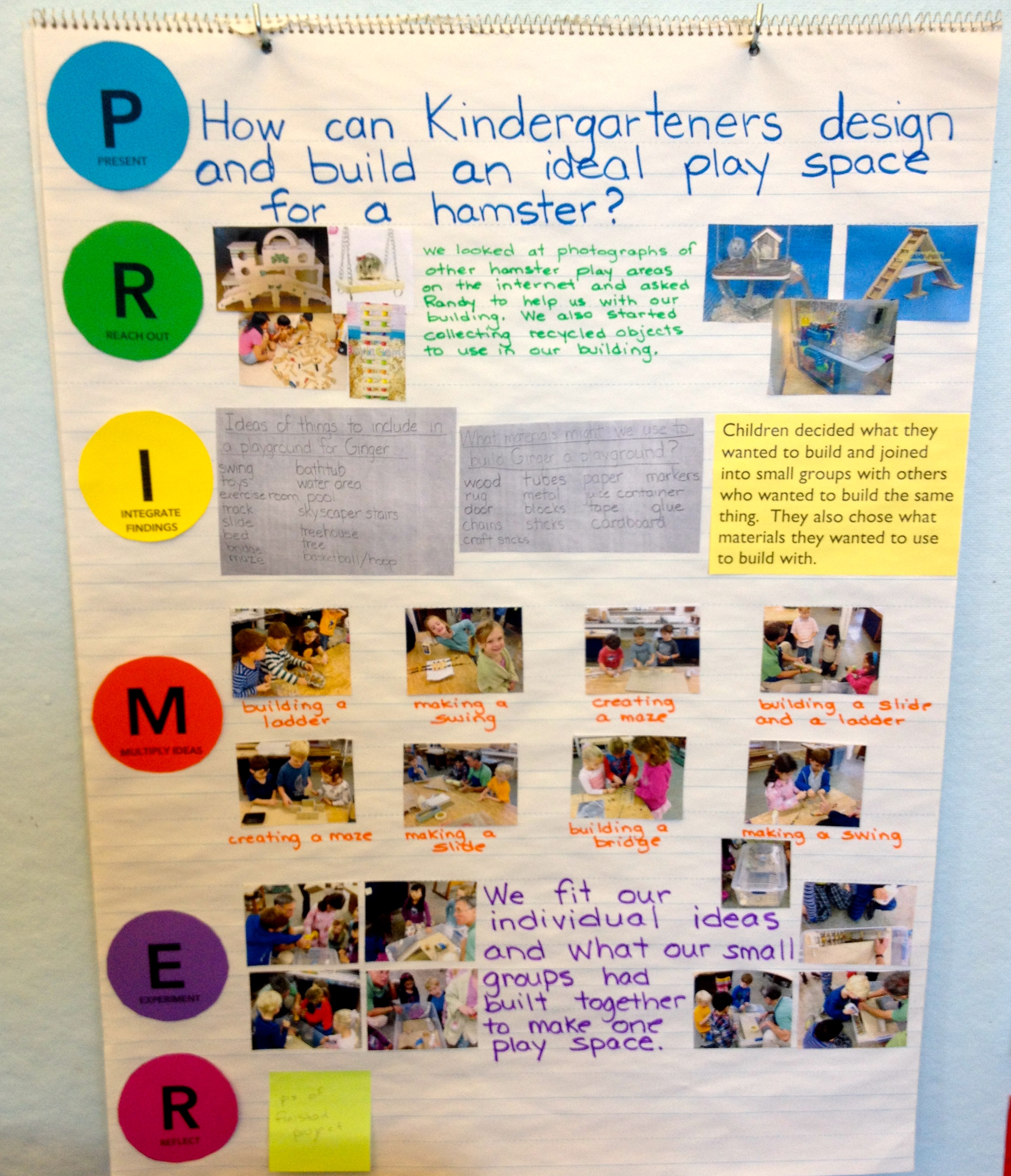 On October 18th, we spent a delightful midday at Moses Brown School in Providence, RI. I am in the middle of a design project with Moses Brown, collaborating with Cannon Design, TTT, to design a new Early Childhood Center. On the 18th we were there see the whole school in action in a final phase of what they called the MB Challenge.
Throughout the school, all the students were engaged with different problems to solve through design. The faculty had adapted a version of Design Thinking to give the process a creative structure. As we walked around, we saw 60 different groups, 3 year olds to high school seniors, working on their final phase of an experiment or an installation.
On October 18th, we spent a delightful midday at Moses Brown School in Providence, RI. I am in the middle of a design project with Moses Brown, collaborating with Cannon Design, TTT, to design a new Early Childhood Center. On the 18th we were there see the whole school in action in a final phase of what they called the MB Challenge.
Throughout the school, all the students were engaged with different problems to solve through design. The faculty had adapted a version of Design Thinking to give the process a creative structure. As we walked around, we saw 60 different groups, 3 year olds to high school seniors, working on their final phase of an experiment or an installation.
Each group documented their process in different ways, yet each mirrored the same design thinking process. Below is a rough composition of a middle school challenge: How can we redesign the English classroom to better meet student needs?
From their research, the group resolved that The English classroom needs space for a variety of “stations,” more permanently installed technology, and more comfortable functional furniture in order to improve the learning experience for students and teachers. Next, the group “multiplied” their ideas through brainstorming. They came up with over 70 ideas. Then, they reviewed all their ideas to discern which, or which combinations, had the most possibility and then worked to put them into place.
The kindergarteners decided to design and build an ideal play space for our hamster. They divided into two groups, and each group built a separate “playground.” Their shop teacher, Randy, was a great help to each group. They kept their designs secret from each other. Below you see them at the “unveiling” of their respective playgrounds. They connected them with a “hamster tube.”
Moses Brown has just published a new “manifesto” of sorts, entitled MB BELIEVES, a vision for learning, people and place. Among many enlightened declarations is...a school-wide commitment to cross disciplinary team-teaching. Their MB Challenge was a clear demonstration of action to grow this great idea.
Visiting Schools in St. Louis
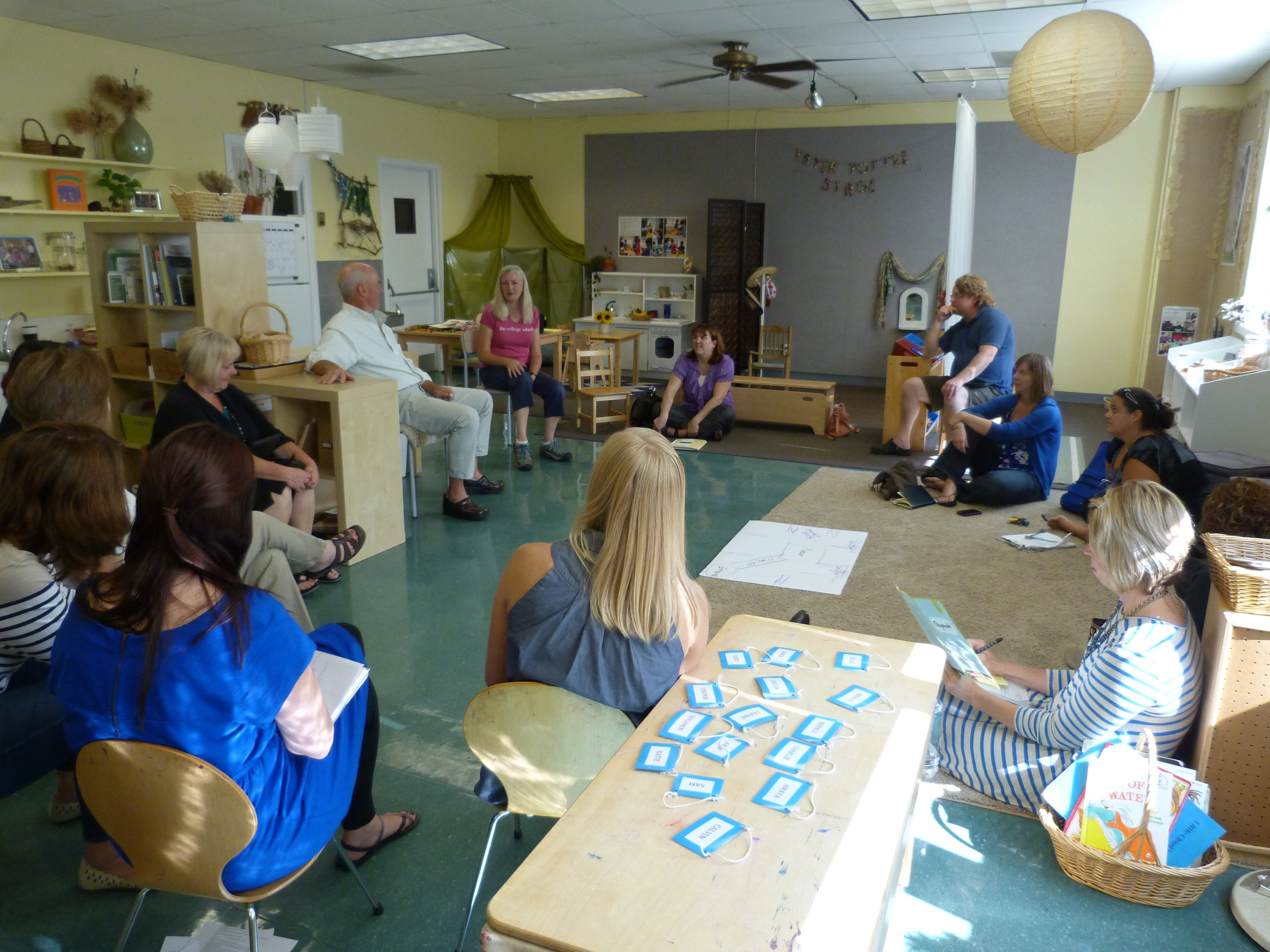 This week we have been in St. Louis working with schools that we love. We worked with the educators in these schools for 20 years, hosted many conferences and events with them, wrote articles and book chapters with them and learned much of what we understand now about education alongside them.
This week we have been in St. Louis working with schools that we love. We worked with the educators in these schools for 20 years, hosted many conferences and events with them, wrote articles and book chapters with them and learned much of what we understand now about education alongside them.
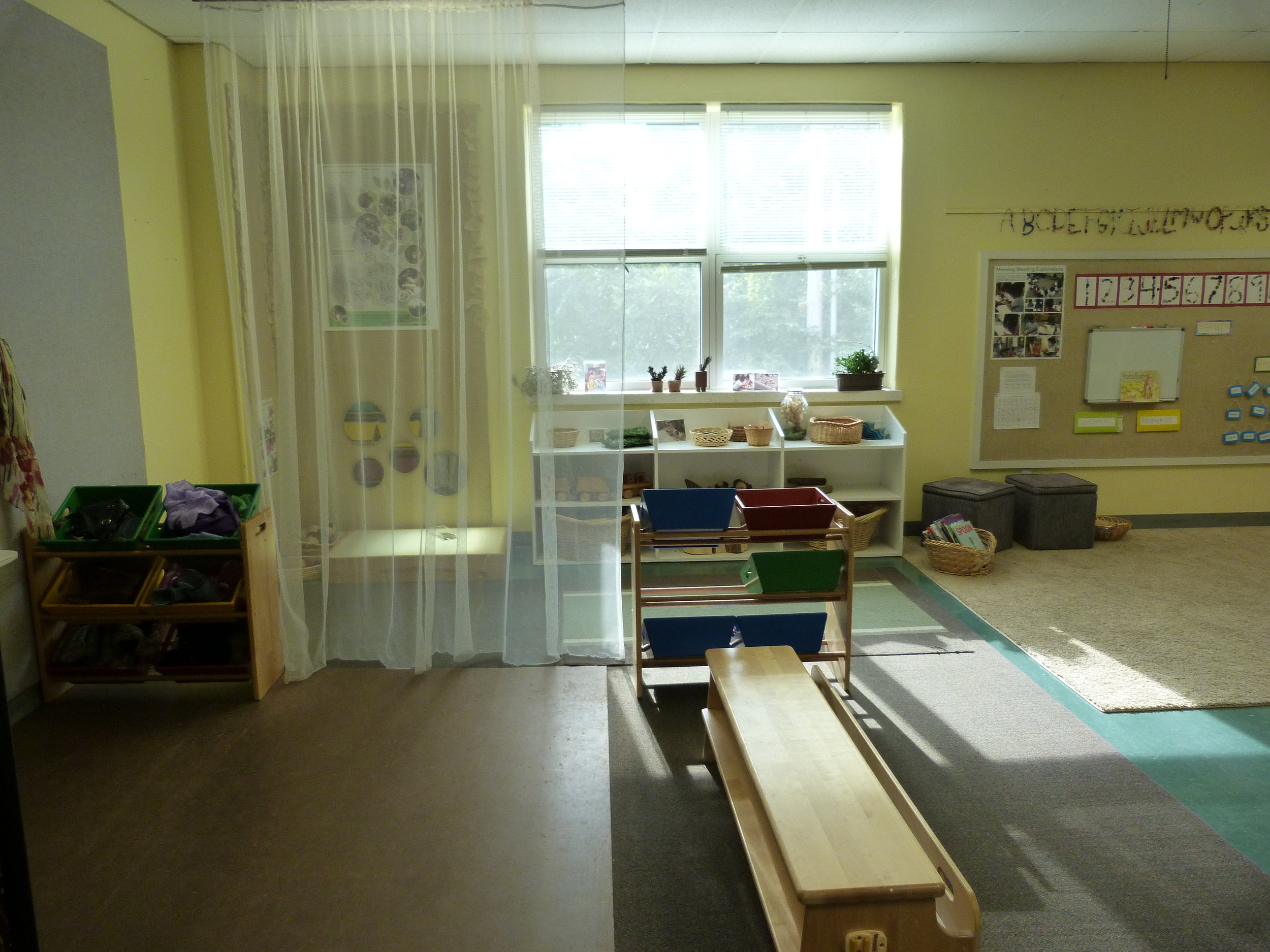
What a pleasure it is to be back on our home turf! We collaborated with The College School, Clayton Schools' Family Center and The St. Michael School to plan a program to host visitors from St. Mary's Child Center in Indianapolis, Winnetka Public Nursery School outside of Chicago, one educator in a Ph.D. Program at St. Louis University and another from Hutchison School in Memphis.
We all viewed such high quality learning environments and student and teacher work while we were together. We spent a good deal of time observing in the schools and interacting with teachers in dialogue. Ashley and Louise led workshops for the visitors in documentation and curriculum design. All of our visitors appreciated learning together and witnessing schools that could inform and inspire their own work.
We are grateful to these places and to these educators for their wonderful work and their open doors. Thank you to all of our educator friends and colleagues in St. Louis for continuing to inspire all of us. Ashley and I will continue to return to St. Louis and to work with our home schools whenever we can. In the meantime, if you are interested in visiting, please contact them.
Texas A&M University-Commerce and Sustainability Education
 Last spring, I received a call from Martha Foote, Head of the Department of Curriculum and Instruction at Texas A&M University-Commerce. Martha has studied the Reggio Approach, has visited the schools in Reggio Emilia, Italy and is an early childhood advocate. We met when she visited schools in St. Louis for several conferences.
Martha asked if I would consider coming to Texas A&M University-Commerce as a Visiting Scholar to work with her faculty in August... this time, not focused on the inspiration from Reggio Emilia, but on Sustainability and Sustainability Education. Texas A&M University-Commerce is working on STEM initiatives as well as Global Education and Martha felt that my visit would address both of these efforts and coincide with the first day back in school for the faculty. She warned me that it would be really hot in August in Texas! I was honored to accept and looked forward to going.
Last spring, I received a call from Martha Foote, Head of the Department of Curriculum and Instruction at Texas A&M University-Commerce. Martha has studied the Reggio Approach, has visited the schools in Reggio Emilia, Italy and is an early childhood advocate. We met when she visited schools in St. Louis for several conferences.
Martha asked if I would consider coming to Texas A&M University-Commerce as a Visiting Scholar to work with her faculty in August... this time, not focused on the inspiration from Reggio Emilia, but on Sustainability and Sustainability Education. Texas A&M University-Commerce is working on STEM initiatives as well as Global Education and Martha felt that my visit would address both of these efforts and coincide with the first day back in school for the faculty. She warned me that it would be really hot in August in Texas! I was honored to accept and looked forward to going.
My day with the faculty of the Department of Curriculum and Instruction on August 19, 2013, was wonderful in all ways. Having worked closely with the Cloud Institute, The Center for Ecoliteracy, The Sustainable Schools Project and most recently, Matt Dubel, Director of the Fields Pond Audubon Center in Maine, I had lots of options and resources to choose from. As it turned out, Martha and her colleague, Carole Walker, and I co-planned the day. It included thinking together about the challenges and opportunities students today are likely to face in their lifetimes and the skills and dispositions that they will need to meet these challenges and seize these opportunities. The day included looking at exemplary student work that I carried with me, inspired always by our friend and colleague, Ron Berger to take work that people can touch and feel. We also heard strong and articulate student voices, from The College School where I taught for many years, and from California from the STRAW project where students and teachers have restored 20 miles of a watershed in Marin County.
The faculty concluded the day reflecting on their strengths as a department in all these areas and also areas for growth. They wanted to plan future meetings such as the one we shared, where they could think together about integrating sustainability across their campus and community. They wanted to recognize the power that they have to influence the school districts that they work with in positive and proactive ways. They were eager to create plans and act on them. One of the most exciting ideas came from Chip Fox, Assistant Dean of the College of Science, Engineering and Agriculture...to initiate a certification program for Sustainability Education.
I am so impressed with the openness, energy and commitment of this faculty. Now, I think we should all keep an eye on Texas A&M University-Commerce for new initiatives in Sustainability Education. We need more leaders in this field and they are ready.


